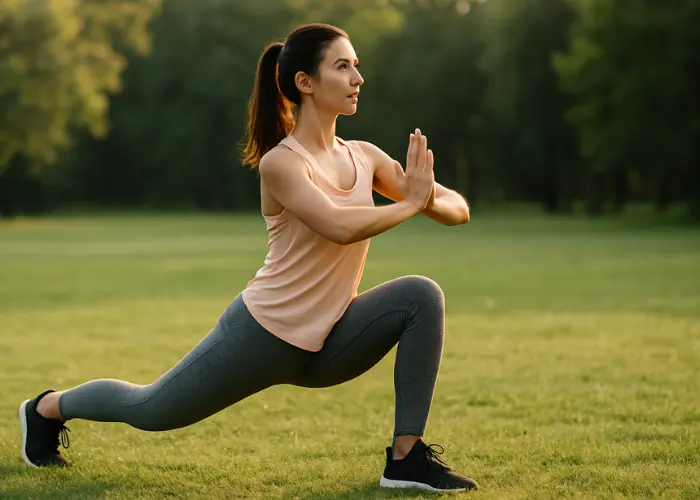Whether you’re a daily walker, a weekend hiker, or someone starting a new fitness habit, stretching routines are essential for keeping your body healthy and injury-free. While it might be tempting to jump right into a workout, taking a few minutes to stretch can improve your flexibility, support better posture, and reduce the risk of strain or sprain.
In this guide, we’ll explore practical ways to build stretching into your day and create habits that help prevent injury naturally—no fancy equipment or gym membership required.
Why Stretching Matters for Everyday Health
Stretching isn’t just for athletes. It plays a key role in injury prevention by:
- Increasing blood flow to muscles
- Improving joint range of motion
- Supporting muscle coordination
- Reducing post-workout soreness
According to the National Institutes of Health (NIH), regular flexibility training contributes to functional fitness, particularly as we age.
And stretching doesn’t have to be complicated. A few intentional minutes each day can make a big difference in how your body feels and moves.
Daily Stretching Routine for Beginners
Not sure where to start? Try this gentle, full-body routine you can do in under 10 minutes.
- Neck Rolls (30 seconds each side)
Relieves tension from looking at screens or sitting long hours. - Shoulder Rolls (30 seconds forward and back)
Eases stiffness and improves upper-body mobility. - Standing Forward Fold (1 minute)
Gently stretches the hamstrings and lower back. - Lunge with a Twist (30 seconds each side)
Opens hips and works on spine flexibility. - Seated Butterfly Stretch (1 minute)
Targets the inner thighs and hips.
This routine is ideal before or after light activity, or even as a mid-day reset at your desk.
Best Times to Stretch for Injury Prevention
Timing can affect how well your body responds to stretching. Here’s what the Centers for Disease Control and Prevention (CDC) suggests:
- Warm muscles stretch more effectively. Try light movement (like walking or marching in place) for 5 minutes before a session.
- After workouts is a great time to stretch, as your muscles are already warm and pliable.
- In the morning helps loosen up stiff joints from sleep.
- Before bed can calm the nervous system and promote restful sleep.
Make stretching a consistent part of your routine rather than a once-in-a-while habit.
Stretching Do’s and Don’ts
To get the most from your stretching routine, keep these tips in mind:
Do:
- Breathe deeply and move slowly
- Stretch both sides of your body evenly
- Hold each stretch for at least 20–30 seconds
Don’t:
- Bounce or push through pain
- Stretch cold muscles intensely
- Skip stretching if you’re short on time—just a few minutes helps!
Stretching should feel good, not painful. If something hurts, ease off and try a gentler version.
Long-Term Benefits of Flexibility Training
Committing to regular stretching offers more than injury prevention. Over time, you may notice:
- Better balance and coordination
- Fewer muscle cramps
- Improved posture
- Reduced stress levels
Flexibility also supports healthy aging by helping maintain independence and mobility. A little daily effort goes a long way in supporting overall wellness.
Ready to Move More Freely?
If you’ve ever skipped stretching or thought it wasn’t necessary, now is the perfect time to start. By adding just a few simple stretching routines to your day, you can prevent injury, improve flexibility, and feel better in your body every day.
💬 Let us know your favorite stretch in the comments!
📌 Share this article with a friend who needs a gentle push to stretch!



